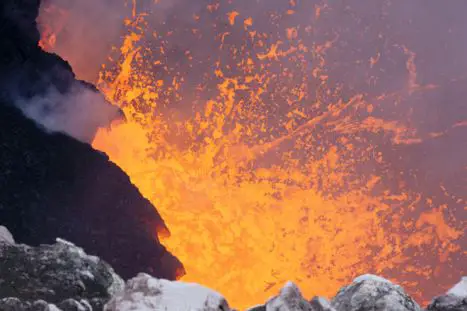
The evolution of Earth has raised many curiosity arousing, unexplained facts and phenomenon. One such question that raises brows and makes us inquisitive is – why do rocks melt on earth? Interesting, phenomenon, isn’t it?
But before answering this question, let’s get a brief understanding of earth’s core. When it comes to the interior of Earth, there are several misconceptions, like the Earth’s upper crust Mantel is made from the tectonic plates floating above the sea of Magma.
The truth is that Mantel is a layer made from silicate rocks that starts from 10-70 km from the surface and goes down till the outer core having a length of 2900 km constituting a large volume and elastic property. Mantel does not have any kind of molten property. But geologists have evidence that rocks found within the Earth are completely molten. But, how is it possible that half of the rocks are solid and some part is molten? Let’s find out!
The most logical explanation here will be that temperature rises in the core. This is similar to what happens to ice-solid water that melts when the temperature rise. But if you apply the same logic to rocks, you can run into a problem as earth is not hot enough to melt mantel rocks. Assuming that mantel rocks are made from peridotite and 200 km deep, therefore, the approximate temperature required for molting them is 2000 degree. But the temperature 200 km underneath the surface is around 1300-1800 degrees which is less than the melting temperature of peridotite. So what makes the peridotite melt at lower temperature?
The answer is water! Water bonds with the minerals and cause disruption of rocks. Now, the oceanic plates sliding above each other release water as it heats up. And that water rise up into mantel and above it to melt the rock at lower temperature.